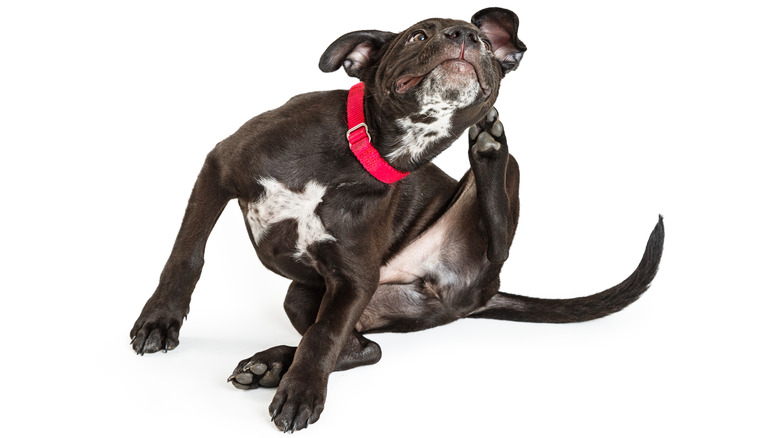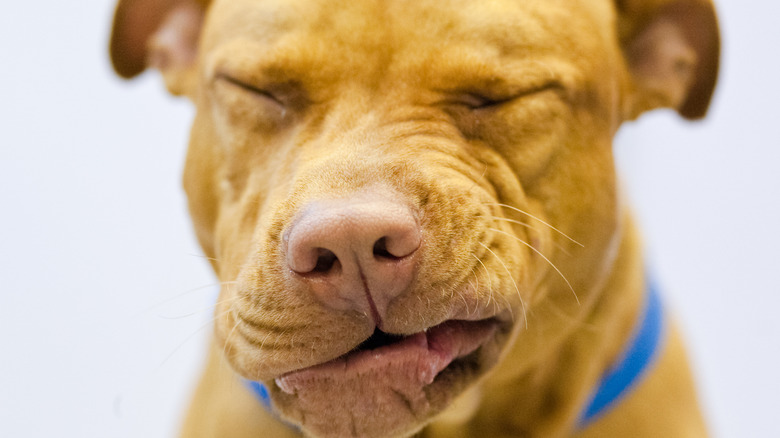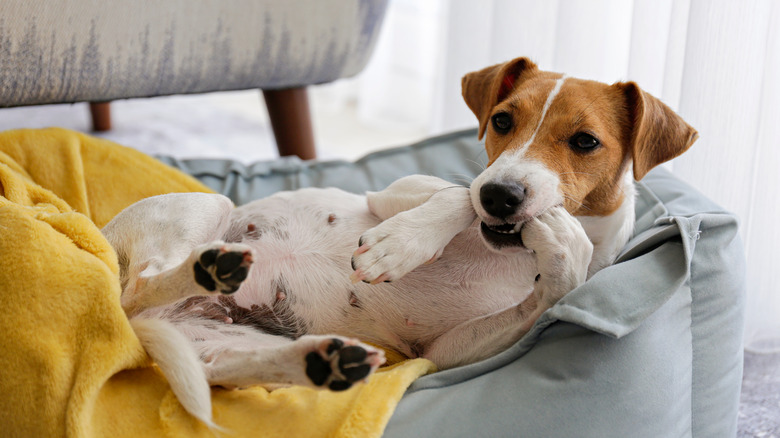Signs Your Dog Might Be Allergic To Dust Mites
It's easy to feel helpless when your pets are itchy. You don't want them to suffer needlessly yet often don't really know what is causing the itch. Naturally, the first things you think about are probably fleas and ticks. Once those pesky critters are ruled out (and you breathe a sigh of relief), your poor pup is still left scratching.
Identifying a pet allergy can be tough, and allergies can sometimes crop up from seemingly nowhere. Your dog may be eating the same food for years and suddenly develop an allergy to it, notes Fetch by WebMD. Dogs may also acquire environmental allergies from things like pollen and mold, per the American Kennel Club.
If your pup is itchy, it's vital to take them to a vet for a diagnosis. Even when you don't see fleas or ticks, it's possible that they can be the culprit. An experienced vet will do a thorough physical check to determine what is causing the irritation. One thing that a vet might discover is a dust mite allergy. Though it's not an allergy we typically first think of, dust mites can cause your pet some intense itch.
Signs your dog may have a dust mite allergy
Dust mites are microscopic insects so you can't readily see them, which is why getting your itchy dog to a vet is so important. When magnified under a microscope, dust mites look similar to fleas but are white (via Wag!).
These tiny mites can trigger an itchy allergy in dogs not only when the mites are alive, but also when they are dead. Dogs (and people) react to the protein in the feces, urine, and dead bodies of dust mites (via American Lung Association).
So, what are the signs that your dog is suffering from a dog mite allergy? The symptoms are pretty basic and include redness, scratching, balding patches from scratching, excessive licking, and even vomiting and diarrhea (via DogsBestLife).
You may also notice itchy watery eyes, coughing, and sneezing in a dog with a dust mite allergy. In severe cases, your dog may have trouble breathing, in which case you need to bring your dog to the vet immediately.
Getting rid of dust mites
If your dog is found to have dust mites, you're not alone. According to the American Lung Association, four out of five homes have dust mites. The only way to get rid of them is to remove the places where they can thrive.
Dust mites live by eating the dead skin from humans that falls off in day-to-day living, so they are largely found in beds and carpets. Instead of drinking water, they absorb moisture from humidity so keeping your home free of humidity is the number one thing you can do to reduce dust mites. In fact, in places where there is low humidity, like deserts, dust mites can't live. Dr. Travis Arndt, DVM, told PetMD, "Pillows, bedding, and carpets are frequent sources for dust mites, as well as hard-to-clean areas underneath sofas or beds."
Other ways to get rid of dust mites are to remove upholstered furniture, curtains, drapes, and carpets if you can. If not, vacuum weekly using a HEPA filter. On floors, mop weekly. Wash your bedding and your dog's bedding weekly in hot water (130 degrees or higher). Finally, dust once a week and use a wet cloth that will trap dust and not allow it to fly around in the air.
Following this routine should help alleviate your dog's dust mite allergy so they can spend less time scratching and more time playing fetch.


